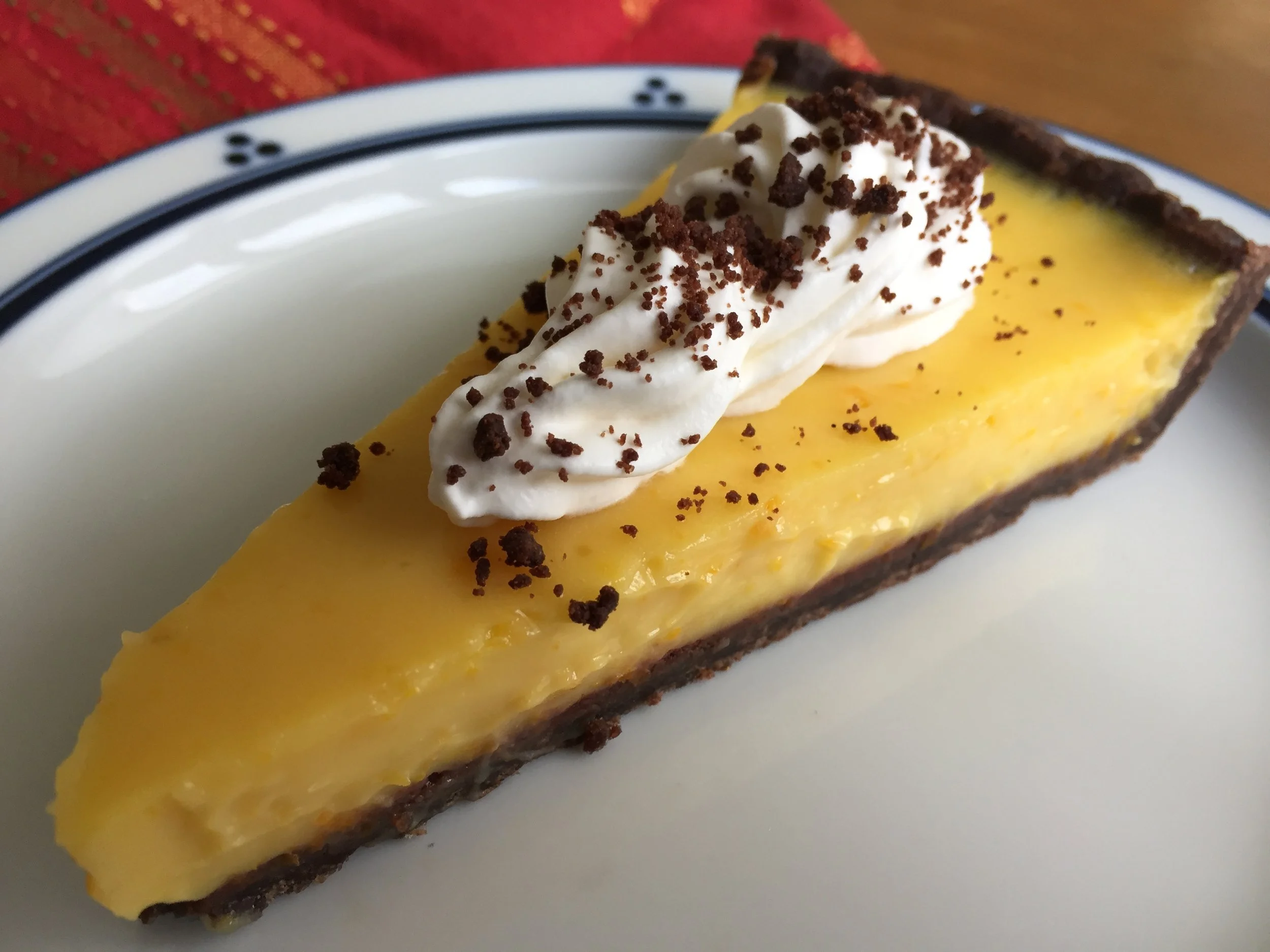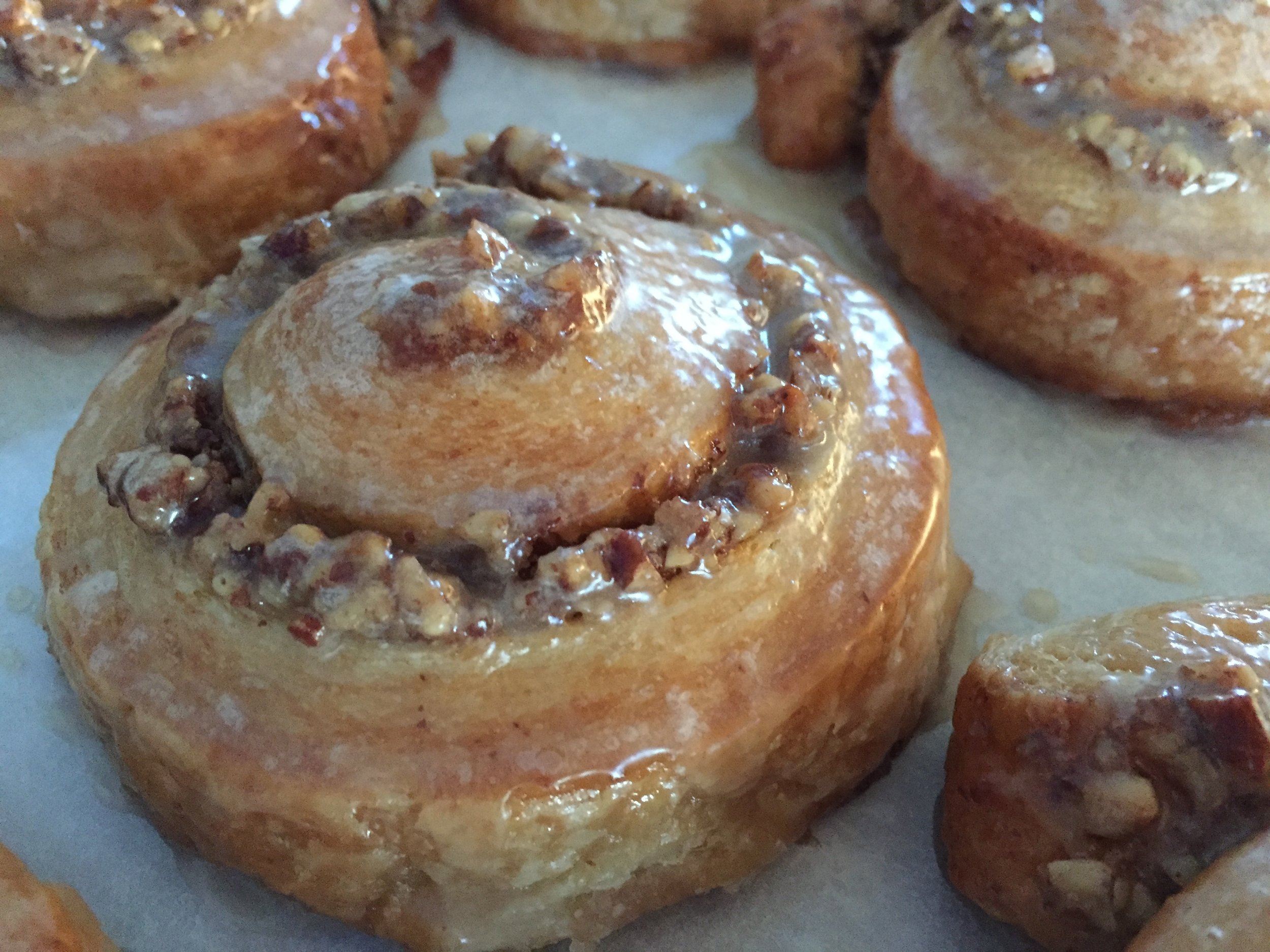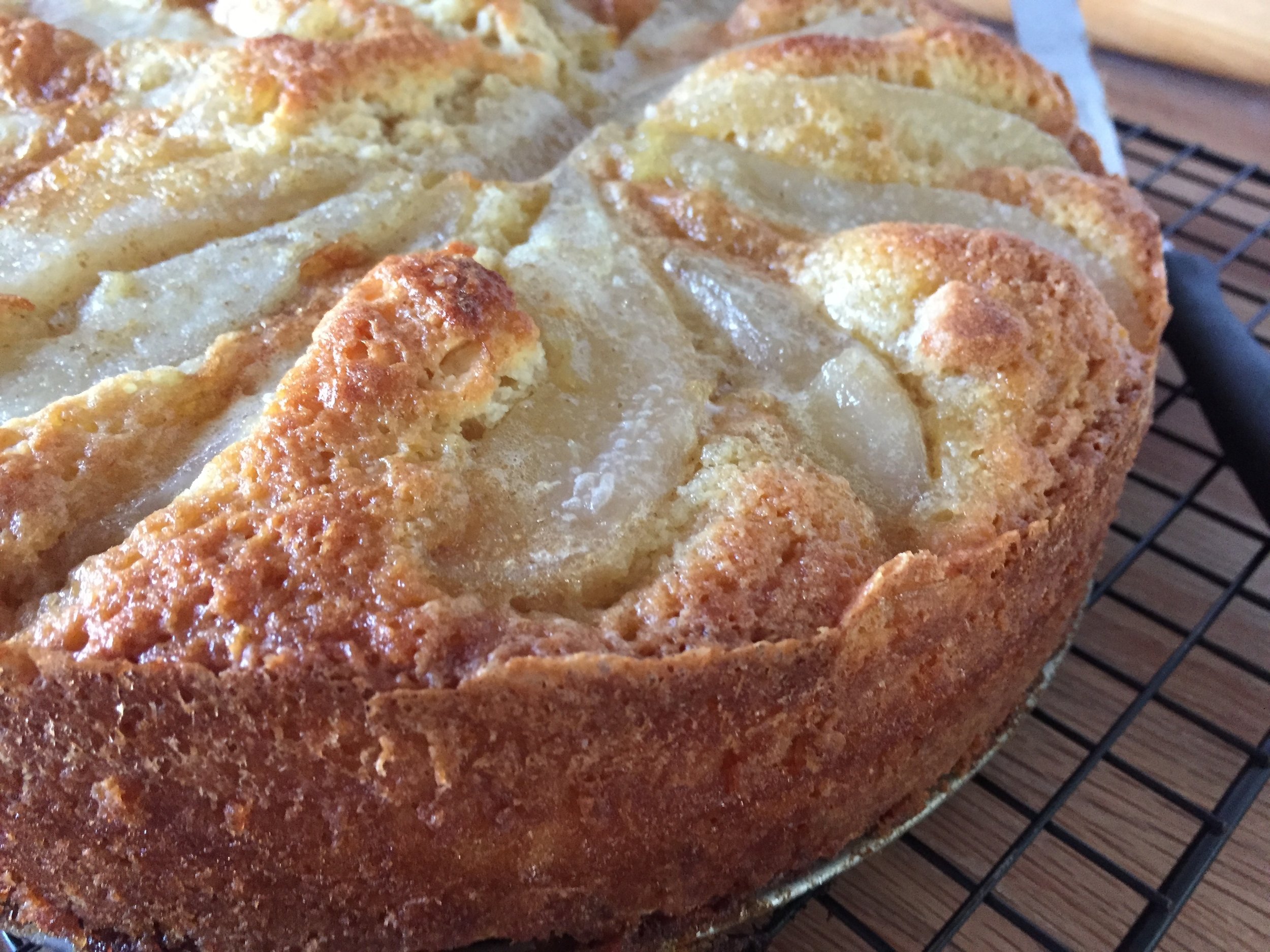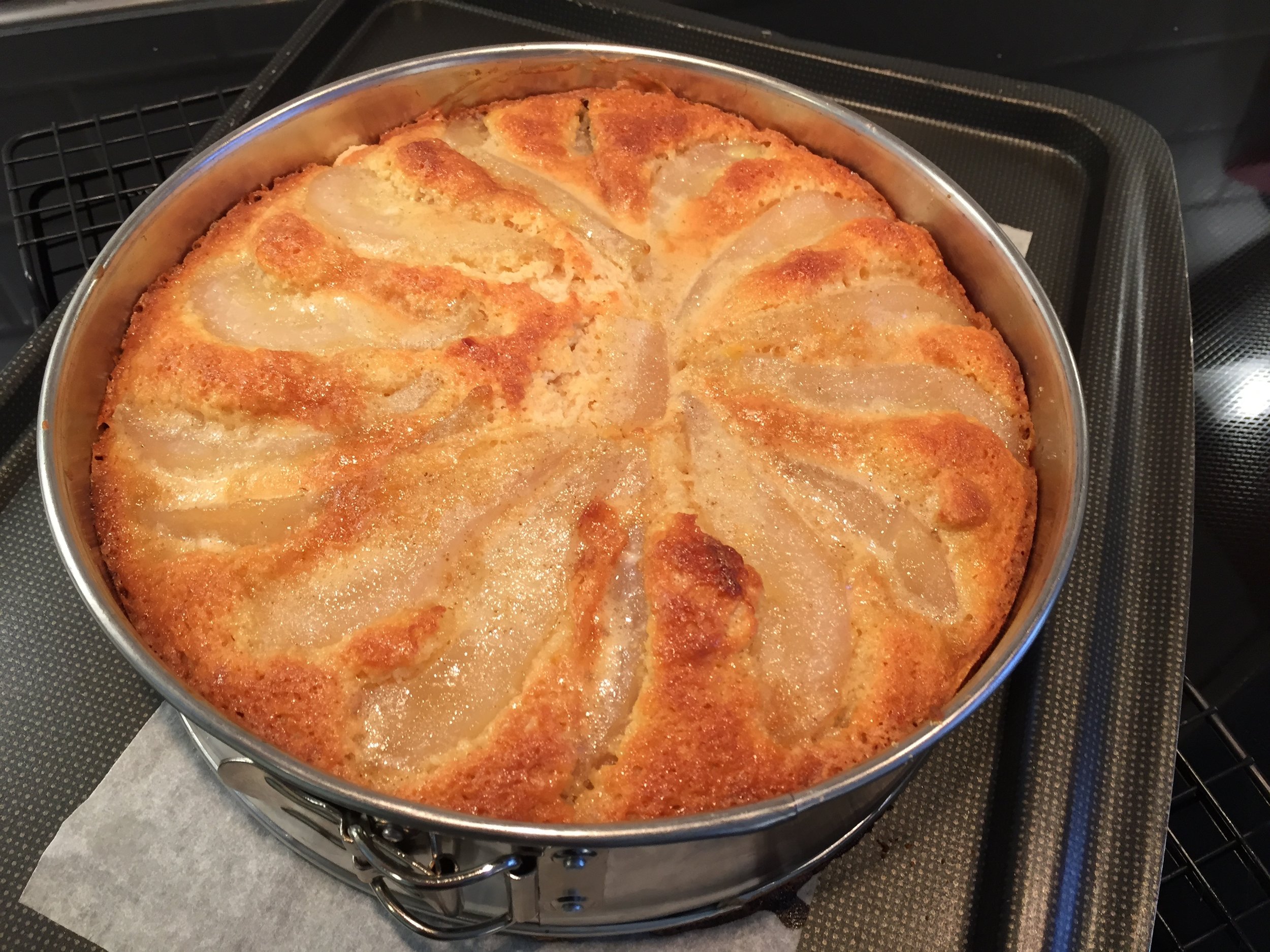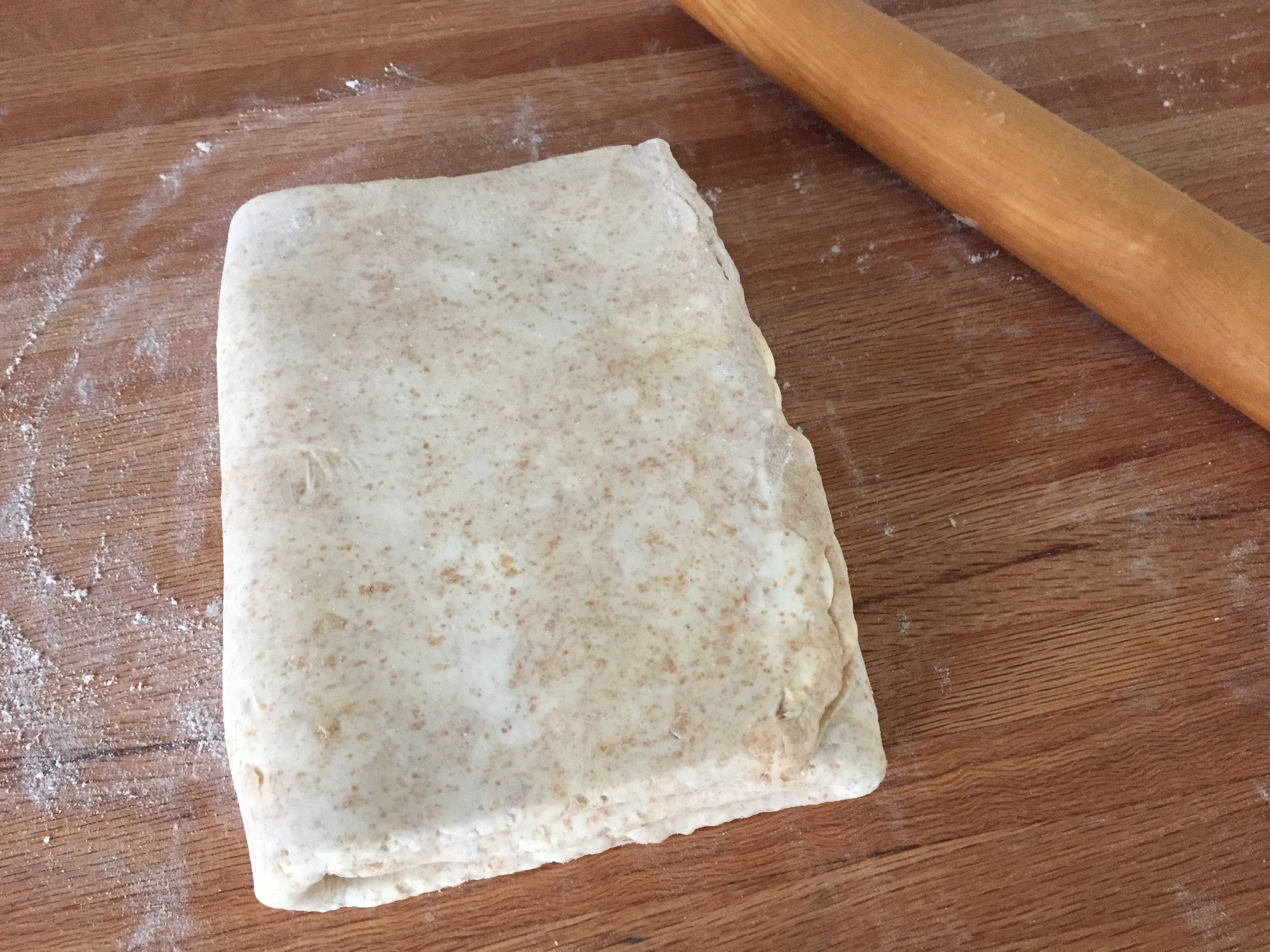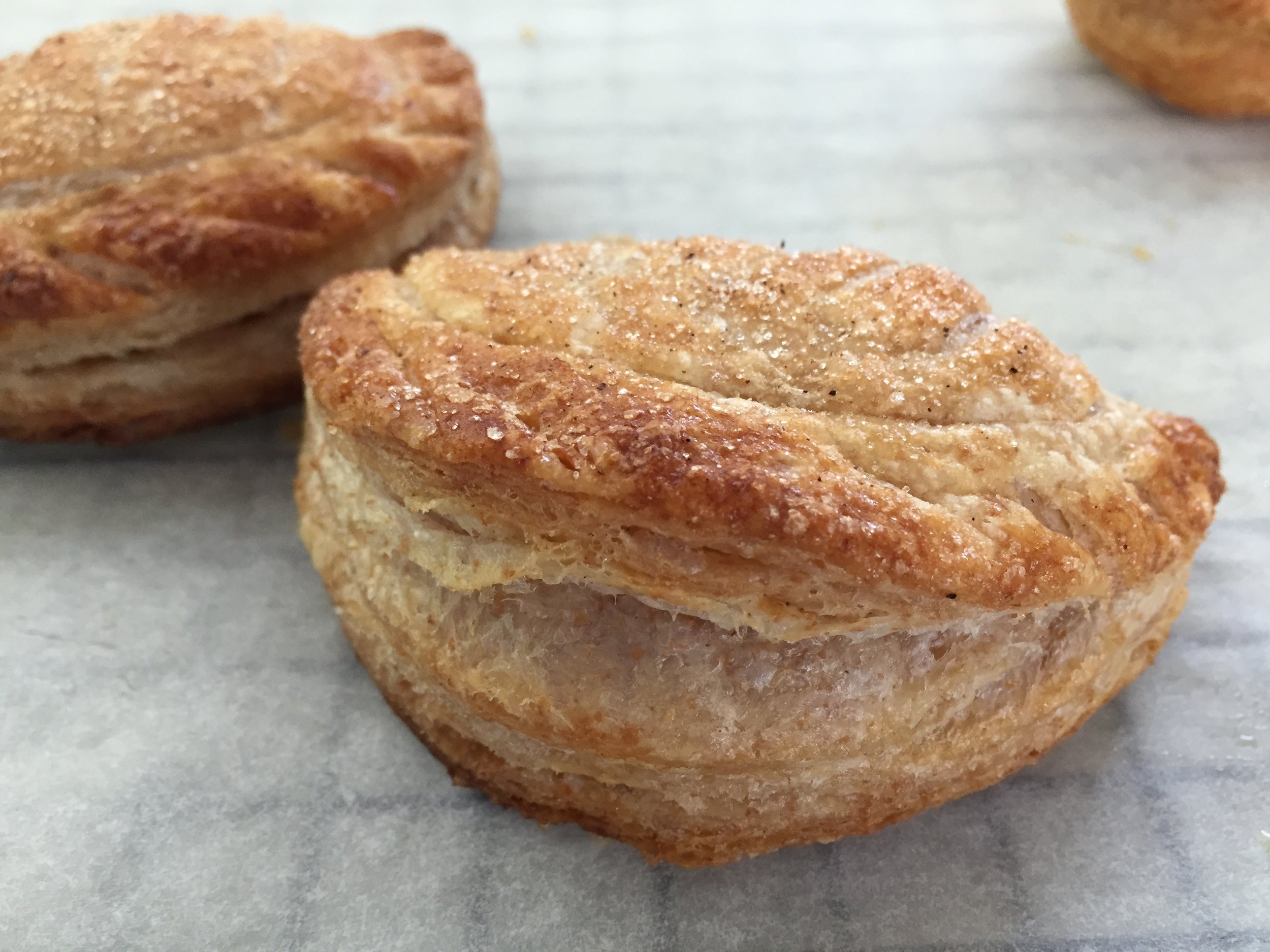Tarte à l'orange et tarte au citron meringuée
/As winter closes its doors and spring is invited in, the taste of citrus is still very enticing to me. Lemons, limes, oranges (naval, blood, tangerine, mandarin, Valencia) and grapefruit remain quite abundant in the local supermarkets, just calling out to be used in so many different ways.
Tarts are one of the mainstays of my baking (why do you think they call me The French Tarte, after all??), and there is nothing like a perfect citrus tart. Not only did I have a new version of a chocolate tart crust I wanted to try, complemented with an orange curd filling, but I was itching to do a slightly different version of the classic tarte au citron with some kind of meringue garnish - think lemon meringue pie but NOT!
The result of my plan: orange curd baked in a chocolate crust . . . .
and my favorite lemon tart with crumbled crunchy raspberry white chocolate meringue as garnish.
Let's start with the orange version, OK?
The chocolate short dough for the tarte à l'orange is a variation on the one I've been using for years now. It has the addition of instant espresso powder to ramp up the chocolate taste, plus a slightly higher ratio of butter and cocoa powder compared to the flour.
Here's the process: in a medium bowl sift together 248 g all purpose flour, 42 g Dutch process cocoa powder and 1/2 teaspoon instant espresso powder. In a mixer bowl using the paddle attachment blend 179 g unsalted butter, 44 g light brown sugar, 44 g granulated sugar and 1/4 teaspoon vanilla extract. Add 43 g egg and 1 teaspoon heavy cream and blend in. Mix in the dry ingredients on low speed just until blended. Wrap and chill for an hour before rolling out or, if not using right away, freeze for up to 3 months. NOTE: makes plenty for 2 full size 9-10" tarts.
I blind baked the crust, let it cool and then spread a thin layer of melted chocolate over the bottom. That's just one of the ways to protect the bottom crust from "sogging" under the filling, particularly if held refrigerated over a day or three. Hmmm - looking pretty good!
The orange curd is a pretty basic version made with the usual suspects - citrus juice and zest, eggs/yolks, sugar and butter. For this recipe, in a medium bowl whisk together 3 large egg yolks and 3 large eggs. In a medium saucepan bring to a simmer 3/4 cup (180 ml) orange juice (could be tangerine, Cara-Cara, navel), 1/4 cup (60 ml) lemon juice, grated zest of one orange and one lemon, 125 g sugar, 1/8 teaspoon salt and 170 g unsalted butter. Have 1/2 teaspoon vanilla extract and the zests of one more orange and one more lemon waiting on the side.
Temper the eggs with the juice/sugar/butter mixture then return the whole shebang to the pot and cook over medium heat, while whisking constantly, just until you see tiny bubbles developing around the edges of the pan, steam begins rising off and it begins to thicken. Now strain into a clean bowl and add in the vanilla and reserved zests.
Pour the warm curd into the prepared crust and bake in a 325º oven for about 10-15 minutes until the filling is just set and you see a hint of a jiggle in the center. Let cool on a wire rack. Carefully remove from the tart pan and serve, or cover and refrigerate for 1-2 days. NOTE: always BEST the day of!!
Side note: we noticed the second day that the citrus flavor was not nearly as bright and fresh - orange doesn't seem to hold up nearly as well as lemon.
The crust had just the right chocolate flavor, the filling a lovely sense of citrus-osity and the combination was deelish served with lightly sweetened Chantilly cream (my go-to garnish) and chocolate shortbread crumbs. Yup.
And guess what!? Steve liked it!! Yippee.
Next up - the lemon version. Since I've written about the tarte au citron à la Jacques Genin in a previous post, I'll simply focus on the meringue garnish that I opted for this time around.
I went with a basic French meringue (2 parts sugar to 1 part egg whites by weight, a pinch of cream of tartar) whipped to medium stiff peaks. I then folded in some crushed freeze dried raspberries and some finely chopped white chocolate (use your judgement on how much you'd like to add). I doled out blobs of the meringue onto silpat lined sheet pans and baked them at 200ºF for about an hour and a half to dry and crisp them up. Once cool they crumbled very nicely into just the right shards to top my tarte au citron.
Destined for a family dinner while sister Mary and niece Mallory were visiting, I served slices with a sprinkle of fresh raspberries. I've gotta tell ya - this tart held up extremely well in the fridge over several days. It served as our dessert for two days in a row and did not disappoint. Of course I LOVE the tartness and bright, fresh flavor of this one, and the crunchy meringue bits on top of the cool luscious curd gave it that special something.
Everyone enjoyed their slice, and, even though Steve tends to be a chocolate kind 'a guy, he gave this one an A+. Two for two - not too shabby.
Happy spring and happy baking!

